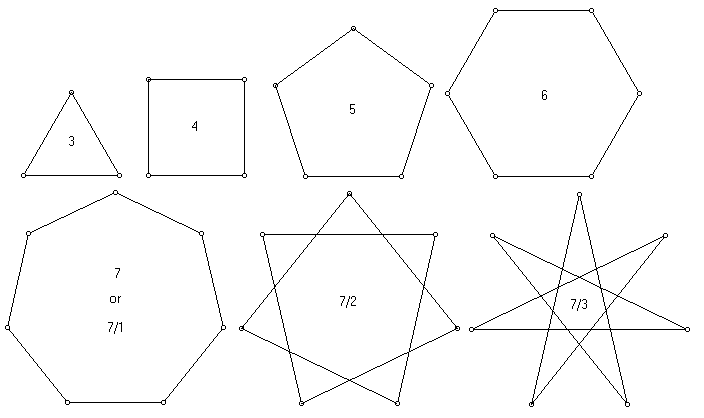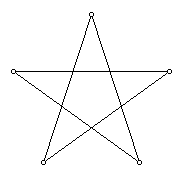Polygons
Polygons are two-dimensional shapes consisting of a cycle of line segments. The segments are edges which meet in pairs at corners called vertices. The picture shows several regular polygons, which have equal angles and equal edge lengths. A polygon can be self-intersecting, meaning edges cross other edges. (The points of intersection are not vertices.)

Regular polygons which are not self-intersecting are identified by an integer corresponding to the number of sides (or vertices) it contains. Regular self-intersecting polygons are identified by a fraction n/m, where n is the number of edges (or vertices) and each vertex is connected to the mth vertex around the circle of vertices.
 A
polygon is convex if it is not self-intersecting and all interior
angles are less than 180 degrees. The simplest nonconvex regular polygon
is the pentagram, denoted 5/2.
A
polygon is convex if it is not self-intersecting and all interior
angles are less than 180 degrees. The simplest nonconvex regular polygon
is the pentagram, denoted 5/2.
Virtual Polyhedra, (c) 1996,George W. Hart